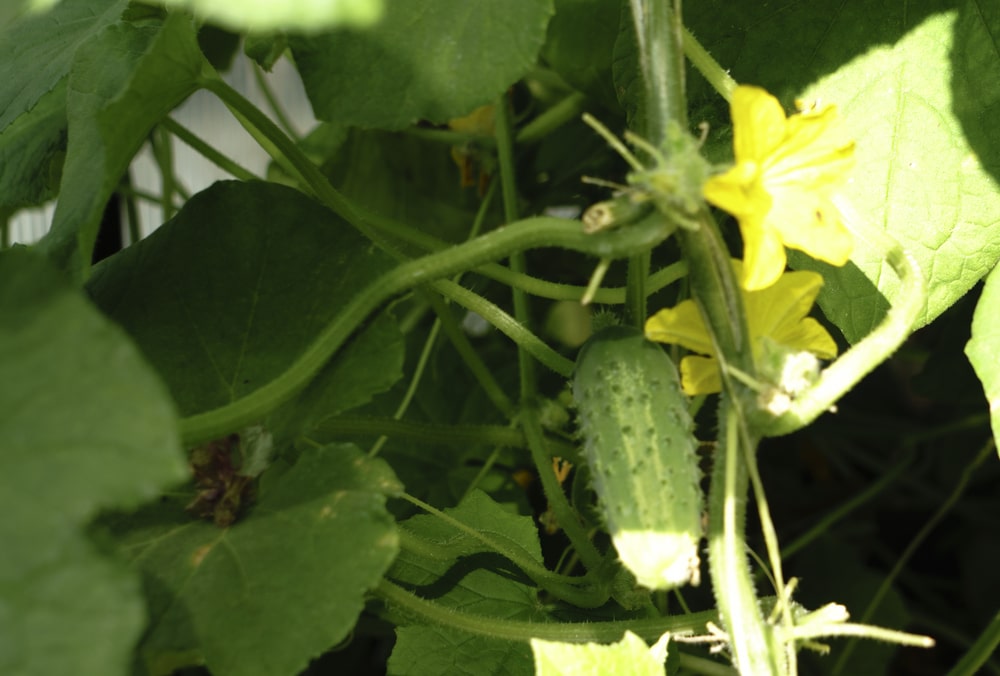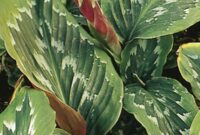The Basics of Growing Spiky Cucumbers
Cucumbers are a versatile and popular vegetable in many gardens, but have you ever considered growing spiky cucumbers? These unique varieties of cucumbers can add a fun and interesting twist to your garden, and they’re just as delicious as their smooth-skinned counterparts.
Choosing the Right Variety
When it comes to growing spiky cucumbers, your choice of cucumber variety is crucial. Not all cucumber varieties naturally produce spiky or prickly skin. Look for cucumber varieties specifically labeled as “spiky” or “burpless,” as these are more likely to have the characteristic spines on their skin. Some popular spiky cucumber varieties include:
1. Lemon Cucumber (Cucumis sativus ‘Lemon’)
- These small, round cucumbers are not only spiky but also have a unique lemon-like flavor.
- Lemon cucumbers are excellent for pickling and snacking.
2. Crystal Apple Cucumber (Cucumis sativus ‘Crystal Apple’)
- This heirloom variety produces apple-shaped cucumbers with distinctive spiky skin.
- They are crisp and sweet, perfect for salads.
3. Mexican Sour Gherkin (Melothria scabra)
- Although not a true cucumber, these tiny, spiky fruits resemble mini cucumbers and have a tangy flavor.
- Mexican sour gherkins are great for pickling and garnishes.
Planting and Care
Once you’ve selected the right spiky cucumber variety, it’s time to start planting and caring for your cucumbers.
Soil and Location
- Spiky cucumbers thrive in well-draining soil with a pH level between 6.0 and 7.0.
- Choose a sunny location in your garden that receives at least 6-8 hours of sunlight daily.
Planting
- Plant cucumber seeds or seedlings directly in the garden after the last frost date in your area.
- Space the plants about 12-24 inches apart, depending on the variety.
- Provide support, such as trellises or stakes, to help the vines climb and keep the cucumbers off the ground.
Watering and Fertilizing
- Keep the soil consistently moist but not waterlogged. Cucumbers need regular watering, especially during hot weather.
- Fertilize your cucumber plants with a balanced, all-purpose fertilizer every 3-4 weeks.
Pest and Disease Management
- Watch out for common cucumber pests like aphids, cucumber beetles, and spider mites.
- Practice good garden hygiene and remove any diseased plants promptly to prevent the spread of diseases like powdery mildew.
Harvesting Spiky Cucumbers
Knowing when and how to harvest your spiky cucumbers is essential to enjoy them at their peak.
- Most spiky cucumber varieties are ready for harvest when they reach 2-3 inches in length. However, you can let some varieties grow larger.
- Use a pair of gardening shears or a sharp knife to cut the cucumbers from the vine, being careful not to damage the plant.
- Harvest regularly to encourage more fruit production.
Troubleshooting Common Issues When Growing Spiky Cucumbers
Growing spiky cucumbers can be a fun and rewarding experience, but like any gardening endeavor, it comes with its share of challenges. In this article, we’ll explore some of the most common issues you may encounter when cultivating spiky cucumbers and provide solutions to help you overcome them.
1. Yellowing Leaves and Poor Growth
Yellowing leaves and stunted growth are common problems that cucumber growers face. This issue can have several causes:
Soil Nutrient Deficiency
- Solution: Conduct a soil test to determine nutrient deficiencies and amend the soil accordingly. Cucumbers require well-balanced fertilization with a focus on nitrogen, potassium, and phosphorus.
Overwatering or Poor Drainage
- Solution: Ensure proper drainage to prevent waterlogged soil. Avoid overwatering, as excessive moisture can lead to root rot and poor growth. Use mulch to help regulate soil moisture.
Pests or Diseases
- Solution: Regularly inspect your cucumber plants for signs of pests or diseases. Treat infestations promptly with appropriate pesticides or fungicides.
2. Bitter Cucumbers
Bitterness in cucumbers can be unappetizing and is often caused by environmental factors:
High Temperatures
- Solution: Plant cucumbers in a location with partial shade or provide shade during the hottest part of the day. High temperatures can make cucumbers turn bitter.
Overripe Cucumbers
- Solution: Harvest cucumbers when they are at the ideal size and color. Overripe cucumbers tend to become bitter.
Inadequate Watering
- Solution: Maintain consistent soil moisture by watering regularly. Fluctuations in soil moisture can lead to bitterness.
3. Cucumber Pests
Various pests can plague cucumber plants, impacting their health and fruit production:
Aphids
- Solution: Use insecticidal soap or neem oil to control aphid infestations. Encourage natural predators like ladybugs and lacewings.
Cucumber Beetles
- Solution: Handpick beetles when possible. Apply row covers to protect plants during the early growing stages. Neem oil or pyrethrin-based sprays can help control beetle populations.
Spider Mites
- Solution: Introduce predatory mites or use a strong spray of water to dislodge spider mites from plants. Neem oil can also be effective.
Spiky Cucumber vs. Regular Cucumber: What’s the Difference?
Cucumbers are a beloved vegetable that comes in various shapes, sizes, and textures. While the smooth-skinned, long green cucumber is the most common, there are also spiky cucumbers that offer a unique twist on this garden favorite.
Spiky Cucumber: The Unique Alternative
Spiky cucumbers, also known as prickly cucumbers, stand out due to their distinct appearance. Here are some key characteristics of spiky cucumbers:
1. Skin Texture
- Spiky cucumbers have small, soft spines or prickles on their skin, giving them a textured appearance.
- These spines are non-toxic and can be consumed without any harm.
2. Flavor Profile
- Spiky cucumbers typically have a crisp texture and a slightly sweet, refreshing flavor.
- Their flavor is often compared to regular cucumbers but may vary depending on the specific variety.
3. Size and Shape
- Spiky cucumbers come in various shapes, including round, oval, and even apple-like.
- They are generally smaller than regular cucumbers, making them a convenient choice for snacking and pickling.
Regular Cucumber: The Classic Choice
Regular cucumbers, also known as slicing cucumbers, are the cucumbers most commonly found in grocery stores and gardens. Here’s how they differ from their spiky counterparts:
1. Skin Texture
- Regular cucumbers have smooth, waxy skin without any prickles or spines.
- This smooth skin is often preferred for slicing and salads.
2. Flavor Profile
- Regular cucumbers have a mild, watery flavor with a slightly bitter undertone.
- Their flesh is tender, making them ideal for fresh salads and sandwiches.
3. Size and Shape
- Regular cucumbers are typically elongated, reaching 6 to 9 inches in length, though some varieties can be smaller.
- They are versatile and can be used in a wide range of culinary applications.
How to Use Spiky and Regular Cucumbers
Both spiky and regular cucumbers have their place in the kitchen. Here are some ideas for how to use each type:
Spiky Cucumbers
- Spiky cucumbers are excellent for snacking due to their smaller size and refreshing flavor.
- They add a unique texture and appearance to salads and cold dishes.
- Spiky cucumbers are well-suited for pickling, where their texture and prickly skin can provide a delightful contrast.
Regular Cucumbers
- Regular cucumbers are perfect for classic cucumber salads and cucumber sandwiches.
- They are great for making cucumber water or infusing into cocktails for a subtle, cooling flavor.
- Regular cucumbers are also commonly used for garnishes and as a crunchy addition to sushi rolls.
Conclusion
Spiky cucumbers and regular cucumbers each offer a distinct set of characteristics that cater to different culinary preferences. Whether you prefer the unique texture of spiky cucumbers or the classic, smooth-skinned regular cucumbers, both varieties are delicious and versatile additions to your garden and kitchen. Experiment with both types to discover which one best suits your taste and culinary needs.
How to Remove Cucumber Spikes:
Removing the spikes or prickles from cucumbers is a simple process. Here’s how to do it:
- Wash the Cucumber: Start by washing the cucumber thoroughly to remove any dirt or debris.
- Peel the Cucumber: Use a vegetable peeler or a sharp knife to peel away the skin of the cucumber. The spikes should come off with the skin.
- Trim the Ends: Trim both ends of the cucumber to ensure you remove any remaining spikes.
- Rinse Again: Rinse the peeled cucumber under running water to remove any loose spikes or residue.
By following these steps, you can enjoy a spike-free cucumber while retaining its crisp and refreshing flavor.
How to Eat Prickly Cucumber:
Prickly cucumbers, also known as spiky cucumbers, can be enjoyed in various ways, similar to regular cucumbers. Here are some common ways to eat prickly cucumbers:
- Fresh Snacking: Simply wash and slice the prickly cucumber, then enjoy it as a crunchy and refreshing snack.
- Salads: Add sliced or diced prickly cucumbers to your salads for an extra crunch and unique texture.
- Pickling: Prickly cucumbers are excellent for pickling due to their spiky skin. You can make traditional cucumber pickles or try different pickle recipes.
- Garnish: Use thinly sliced prickly cucumbers as a garnish for sandwiches, sushi, or cocktails.
- Cold Dishes: Incorporate them into cold dishes like gazpacho or cucumber yogurt salad.
Remember that prickly cucumbers are edible, and their spiky skin adds a unique visual and textural element to your dishes.
Are Prickly Cucumbers Edible:
Yes, prickly cucumbers, or spiky cucumbers, are edible. The spikes or prickles on their skin are soft and non-toxic, so they won’t harm you if consumed. In fact, the spikes can add a unique texture and appearance to dishes like salads and pickles.
.
.
.
.
.
sourcce image: https://www.garden.eco/prickly-cucumbers



